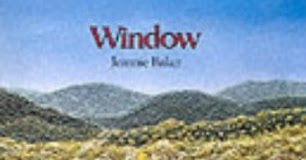
The lack of a narrative text does not hinder understanding, because there are many visual and literal clues embedded in the images which help to propel the narrative: a birthday card on the windowsill tells how old the boy is, his name, and so on. The result is a cumulative sequence of images of great depth and fantastic detail. The last panel, showing the grown-up baby holding his newborn child as he looks through a different window at a pristine piece of bush set aside for a housing estate, brings the ‘story’ back to the beginning.įor the double-page spreads Jeannie constructed thirteen small windows, shallow-relief collages backlit to simulate sunlight, which were then photographed. The trees and birds gradually disappear, to be replaced by houses, roads and supermarkets. And as he grows, the landscape seen through his window changes, reflecting the impact of the expanding community.

The double-page spreads follow the view from the window as the baby grows up. In the first panel a woman stands at the window, holding a baby, looking out at bush teeming with bird life and plants, with wooded hills beyond. Each of the thirteen double-page spreads shows the window frame and the view outside the window – the reader is always standing inside, looking out.

(While it has no text, it does not lack words what words there are, are incorporated into the visual images some of the scenes are ‘immersed’ in print.) The central image is a window. Window is a simple book with deep resonances. Mark Butler tracked Jeannie down in her sun-drenched house in Sydney and discussed Window with her. It also has a serious purpose, to give children an understanding of how growth affects the world we live in. Window is a groundbreaking work which points to one possible direction for books in the future – the wordless picture book.


 0 kommentar(er)
0 kommentar(er)
